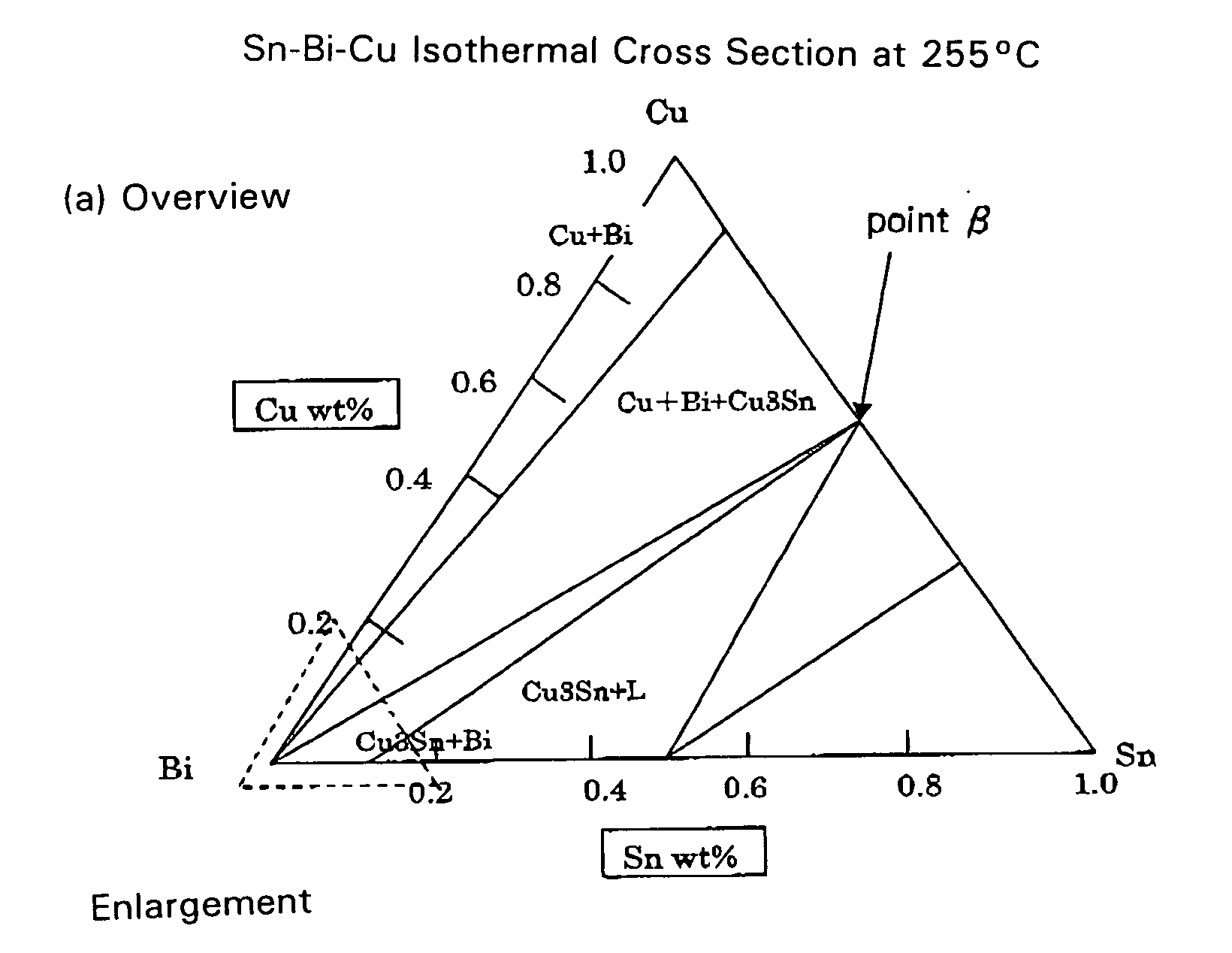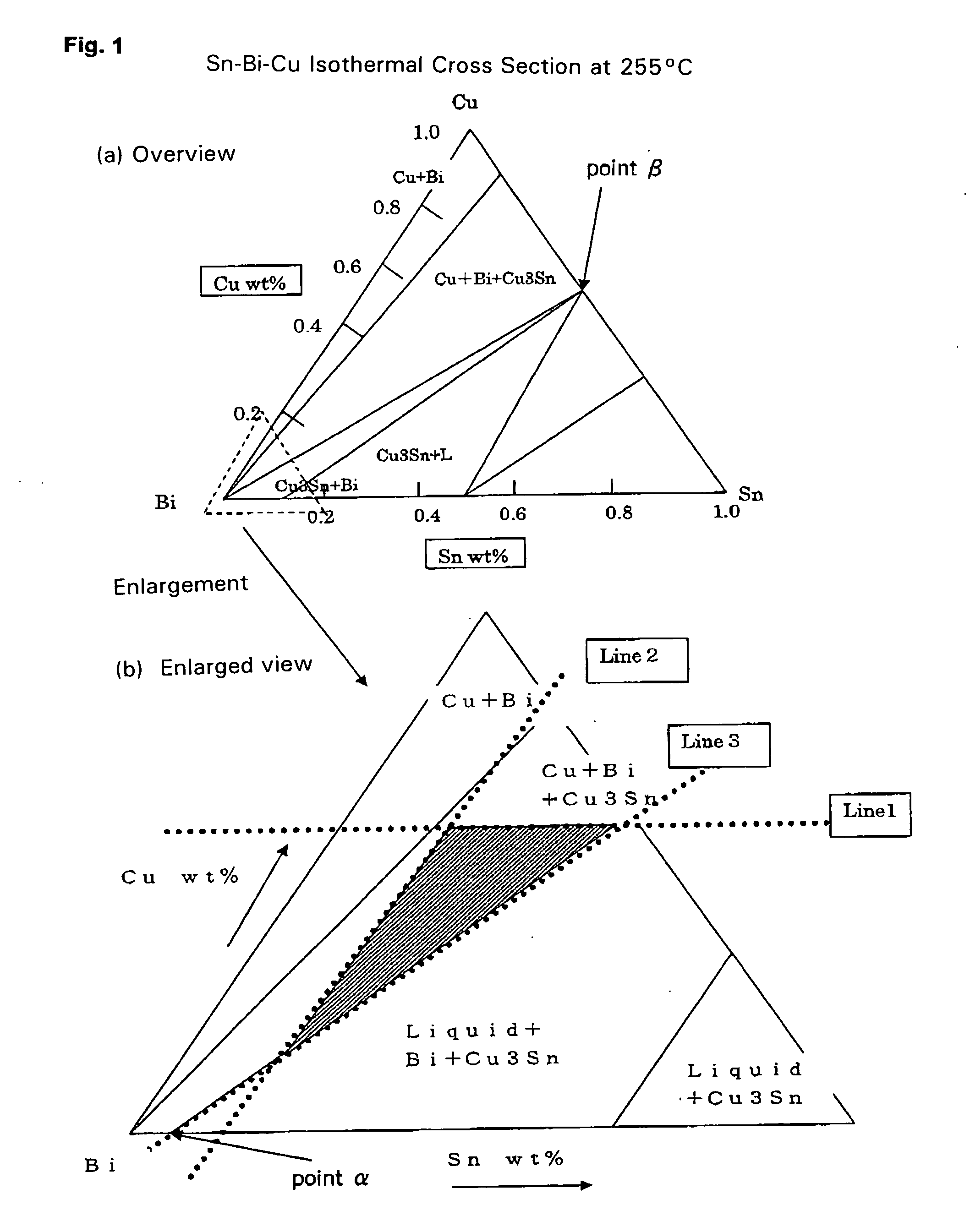Solder Paste and Solder Joint
a technology of solder paste and solder joint, which is applied in the direction of welding/cutting media/materials, solventing apparatus, manufacturing tools, etc., can solve the problems of limiting the use of pb-based solder, difficulty in obtaining a satisfactory solder joint, and insufficient temperature solder. achieve the effect of improving wettability, low melting point and high melting poin
- Summary
- Abstract
- Description
- Claims
- Application Information
AI Technical Summary
Benefits of technology
Problems solved by technology
Method used
Image
Examples
examples
[0067]Table 3 shows examples of the first, second, and third metals together with combinations thereof in accordance with the present invention. An example in which two or more elements are indicated as being a metal powder, e.g., Bi-2.5Ag, means that the metal powder is comprised of an alloy of the two or more elements in the form of a powder. In addition, the note “resin included” means that the solder paste additionally contains a resin to increase strength. The note “Ag-coated Cu” means that the surface of the third metal, which is Cu in this case, is covered with a coating, which is an Ag coating in this case, having a thickness of 0.02-2 μm.
[0068]The average particle diameter of each of the particles shown in Table 3-1, Table 3-2, and Table 3-3 is 30 μm for the first metal, 20 μm for the second metal, and 15 μm for the third metal. Table 3-4 shows various combinations of proportions of these metals determined by N1, N2, and N3, which were calculated from the average particle d...
PUM
| Property | Measurement | Unit |
|---|---|---|
| thickness | aaaaa | aaaaa |
| solidus temperature | aaaaa | aaaaa |
| liquidus temperature | aaaaa | aaaaa |
Abstract
Description
Claims
Application Information
 Login to View More
Login to View More - R&D
- Intellectual Property
- Life Sciences
- Materials
- Tech Scout
- Unparalleled Data Quality
- Higher Quality Content
- 60% Fewer Hallucinations
Browse by: Latest US Patents, China's latest patents, Technical Efficacy Thesaurus, Application Domain, Technology Topic, Popular Technical Reports.
© 2025 PatSnap. All rights reserved.Legal|Privacy policy|Modern Slavery Act Transparency Statement|Sitemap|About US| Contact US: help@patsnap.com


